
Materialia
Scope & Guideline
Pioneering research for a sustainable future.
Introduction
Aims and Scopes
- Additive Manufacturing and Processing Techniques:
Research in this area encompasses the development and optimization of additive manufacturing processes, including laser powder bed fusion and directed energy deposition, to create advanced materials with tailored properties. - Microstructural Characterization and Control:
This scope involves examining the relationship between microstructural features and material properties using advanced characterization techniques, such as electron microscopy and X-ray diffraction, to inform processing and design. - Mechanical Properties and Performance Evaluation:
Studies often focus on the mechanical behavior of materials under various conditions, including high strain rates, fatigue, and creep, to understand failure mechanisms and enhance performance in practical applications. - Functional and Smart Materials:
Research includes the development of materials with specific functionalities, such as shape memory alloys, piezoelectric materials, and biocompatible composites, aimed at applications in biomedical, aerospace, and energy sectors. - Thermal and Electrical Properties:
Investigations into the thermal and electrical behavior of materials, including thermal conductivity and dielectric properties, are crucial for developing materials used in energy storage, conversion, and thermal management. - Sustainability and Recycling:
Materialia also emphasizes sustainable practices in materials science, exploring recycling methods and the development of eco-friendly materials to minimize environmental impact.
Trending and Emerging
- High-Entropy Alloys and Composites:
Recent publications highlight a growing interest in high-entropy alloys and composites, which are engineered to exhibit exceptional mechanical properties and corrosion resistance, suitable for advanced applications in aerospace and energy sectors. - In-Situ Characterization Techniques:
There is an increasing trend in the use of in-situ characterization methods, such as synchrotron X-ray diffraction and electron microscopy, to study materials during processing and loading, providing insights into real-time material behavior. - Machine Learning and Data-Driven Approaches:
The integration of machine learning techniques for predicting material properties and optimizing processing parameters is emerging as a significant trend, allowing for faster material discovery and development. - Biomaterials and Tissue Engineering:
Research focusing on biomaterials for medical applications, particularly in tissue engineering and regenerative medicine, is gaining traction, driven by the need for biocompatible materials that promote healing and integration. - Sustainable Materials and Recycling Technologies:
There is an increasing emphasis on developing sustainable materials and recycling technologies, addressing environmental concerns and the need for resource-efficient practices in materials production.
Declining or Waning
- Traditional Metallic Alloys:
Research specifically focused on conventional metallic alloys is decreasing as the field moves towards high-entropy alloys and novel composite materials that offer superior properties and functionalities. - Basic Materials Science without Application Context:
Papers that solely address fundamental materials science principles without direct applications or innovations are less prevalent, reflecting a trend towards applied research that addresses real-world challenges. - Static Material Properties:
There is a noticeable decline in studies that focus exclusively on static mechanical properties of materials, as the journal increasingly favors dynamic and in-situ studies that capture real-time behavior under various conditions.
Similar Journals
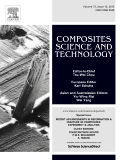
COMPOSITES SCIENCE AND TECHNOLOGY
Driving Innovation in Composite Science and EngineeringComposites Science and Technology, a premier journal published by Elsevier Sci Ltd, serves as a vital resource in the fields of composite materials and engineering. With an impressive 2023 impact factor reflecting its influential contributions, this journal has established itself within the top tier of academic publishing, flaunting a Q1 ranking in both the Ceramics and Composites and Engineering (Miscellaneous) categories. Covering a diverse range of topics from the development of novel composite materials to their practical applications across various industries, it is recognized for its rigorous peer-review process and high-quality research outputs. As reflected in its Scopus rankings, Composites Science and Technology places in the 97th percentile among general engineering journals and the 94th percentile amongst ceramics and composites science literature. Researchers and professionals alike benefit from its comprehensive access to cutting-edge discoveries and advancements, making it an indispensable tool for driving innovation within this dynamic field.
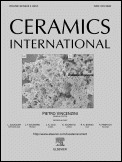
Ceramics International
Transforming materials science with cutting-edge research.Ceramics International is a premier journal published by ELSEVIER SCI LTD, focusing on advancing the field of materials science with a specific emphasis on ceramics and composites. With an impressive impact factor and a top-tier standing in several critical categories, including Q1 rankings in Ceramics and Composites, Electronic, Optical and Magnetic Materials, and Materials Chemistry, this journal serves as a crucial resource for researchers and professionals alike. Established in 1981, it has consistently showcased cutting-edge research in various domains, including surfaces, coatings, and process chemistry technologies, making it invaluable for those advancing theoretical and practical knowledge in these areas. While access is through subscription, the journal’s rich content, profound insights, and rigorous peer-review process ensure high-quality articles that contribute meaningfully to the scientific community. By fostering innovation and collaboration through rigorous research, Ceramics International stands out as an authoritative source for those dedicated to the evolution of materials science.
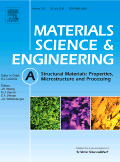
MATERIALS SCIENCE AND ENGINEERING A-STRUCTURAL MATERIALS PROPERTIES MICROSTRUCTURE AND PROCESSING
Exploring Innovations in Structural MaterialsMATERIALS SCIENCE AND ENGINEERING A-STRUCTURAL MATERIALS PROPERTIES MICROSTRUCTURE AND PROCESSING, published by ELSEVIER SCIENCE SA, is a highly regarded journal specializing in the fundamental and applied aspects of materials science. Since its inception in 1988, this journal has established itself as a leading platform for disseminating innovative research findings, particularly focused on structural materials, their properties, microstructure, and processing techniques. With a prominent impact in the field, it ranks in the Q1 category across several disciplines including Condensed Matter Physics, Materials Science, Mechanical Engineering, and Nanoscience and Nanotechnology, highlighting its significance and influence within the academic community. The journal is accessible to a global audience of researchers, professionals, and students, underscoring its commitment to advancing knowledge in materials engineering. Aspiring authors and readers will find this journal an essential resource for cutting-edge research and the latest advancements in the field, further supported by its impressive Scopus rankings that place it among the top-tier publications.
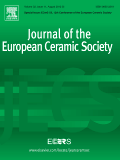
Journal of the European Ceramic Society
Advancing the Frontiers of Ceramic InnovationThe Journal of the European Ceramic Society, published by Elsevier, is a premier academic periodical dedicated to the cutting-edge advancements in the fields of ceramics and composites, as well as materials chemistry. With an impressive impact factor that places it in the top quartile (Q1) of its category, it ranks #33 out of 317 in Materials Science and #16 out of 127 in Ceramics and Composites, showcasing its strong influence in the scientific community. Established in 1989 and set to converge until 2025, this journal serves as a critical platform for researchers and professionals to disseminate their findings, share ideas, and foster collaboration in the rapidly evolving area of ceramic materials. Although it does not offer Open Access options, the journal ensures rigorous peer review and maintains high standards for publication, making it an essential resource for students, academics, and industry experts who are pushing the boundaries of material science.
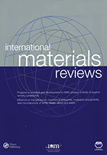
INTERNATIONAL MATERIALS REVIEWS
Connecting Theory and Practice in Materials EngineeringINTERNATIONAL MATERIALS REVIEWS, published by SAGE Publications Inc, is a leading journal dedicated to the comprehensive analysis of contemporary research in the fields of materials chemistry, mechanical engineering, mechanics of materials, and the study of metals and alloys. With an impressive impact factor and a Q1 ranking across multiple categories such as Materials Chemistry and Mechanical Engineering in 2023, it ranks amongst the top journals for innovative materials research. The journal has a long-standing history since its inception in 1987 and continues to serve as a crucial resource for academics and professionals alike. Although it is not open access, it is renowned for its rigorous peer-review process and its commitment to disseminating high-quality materials science research globally. Researchers, students, and industry professionals benefit greatly from the journal's insightful reviews, both for the advancement of theoretical knowledge and practical applications within the fast-evolving materials field.

Polymer-Plastics Technology and Materials
Pioneering Research in Materials ChemistryPolymer-Plastics Technology and Materials is a premier academic journal published by Taylor & Francis Inc., dedicated to the dynamic fields of chemical engineering, materials chemistry, and polymers and plastics. With an impact factor that reinforces its reputation, this journal is strategically indexed in Scopus, ranked notably within its categories (Q2), showcasing its influence and relevance in the academic community. Since its inception in 2019, the journal has served as an essential platform for researchers, professionals, and students to disseminate innovative studies and advancements in polymer science and materials technology. As an Open Access publication, it ensures that cutting-edge research is accessible to a global audience, fostering collaboration and knowledge sharing in the material sciences. Located in the United Kingdom, Polymer-Plastics Technology and Materials continues to enhance the dialogue within the industry, addressing critical challenges and exploring emerging trends that shape the future of polymer and plastics technologies.

Journal of Metals Materials and Minerals
Catalyzing Discoveries in Metals, Ceramics, and BiomaterialsJournal of Metals Materials and Minerals (ISSN: 0857-6149) is a renowned academic publication dedicated to the interdisciplinary fields of metallurgical science, materials engineering, and mineralogy. Published by Chulalongkorn University, Metallurgy & Materials Science Research Institute in Thailand, this journal serves as a pivotal platform for researchers to disseminate their findings and explore innovative applications related to metals, ceramics, polymers, and biomaterials. Although the journal does not currently adopt an open-access model, it provides insightful content that facilitates knowledge sharing among professionals and academics alike. The journal has established its credibility with impressive Scopus ranking percentiles, particularly in categories such as Metals and Alloys and Ceramics and Composites. With an emphasis on advancing the understanding of materials science from 2017 to 2024, the Journal of Metals Materials and Minerals remains an essential resource for those striving to contribute to and stay informed about the latest trends and breakthroughs in these dynamic fields.
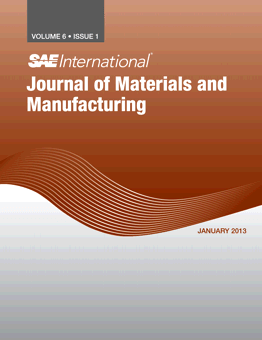
SAE International Journal of Materials and Manufacturing
Transforming Insights into Impactful Manufacturing PracticesSAE International Journal of Materials and Manufacturing, published by SAE International, is a leading peer-reviewed journal that focuses on the advancements and research in the fields of materials science and manufacturing engineering. With ISSN 1946-3979 and E-ISSN 1946-3987, this journal is an essential resource for researchers, professionals, and students who are keen on exploring innovative materials and modern manufacturing techniques. Although the journal currently does not offer open access options, its rigorous selection process ensures the publication of high-quality papers that contribute significantly to the knowledge base in the industry. Recognized within the third and fourth quartiles across various engineering categories, including Industrial and Manufacturing Engineering and Mechanical Engineering, the journal provides an impactful platform for disseminating groundbreaking research. With a converged history since 2002 and a comprehensive approach to critical topics in mechanics of materials, it empowers the academic community with vital insights, trends, and methodologies that propel the future of manufacturing excellence.

Korean Journal of Metals and Materials
Illuminating the Path of Metals and Materials InnovationWelcome to the Korean Journal of Metals and Materials, a premier publication dedicated to advancing research in the interdisciplinary fields of metals and materials science. Published by the Korean Institute of Metals and Materials, this journal aims to foster the dissemination of innovative findings and significant developments across various domains, including electronic, optical, and magnetic materials, metals and alloys, as well as modeling, simulation, and surface coatings. With a commendable Q3 quartile ranking in several relevant categories as of 2023, it serves as a vital resource for researchers, professionals, and students interested in the latest scientific trends and technological applications. The journal has successfully converged from 2007 to 2024, showcasing a rich archive of knowledge. Engaging with this publication gives readers the opportunity to stay updated with critical advancements and enhances collaboration within the vibrant materials science community. Access is available through various platforms, ensuring that our content is widely accessible to all those striving for excellence in the field.
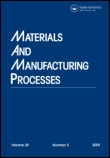
MATERIALS AND MANUFACTURING PROCESSES
Exploring Cutting-Edge Techniques in Materials Science.MATERIALS AND MANUFACTURING PROCESSES, published by Taylor & Francis Inc, is a leading journal dedicated to the dynamic fields of materials science and manufacturing engineering. Established in 1989, the journal has built a formidable reputation, exemplified by its prestigious Q1 rankings in 2023 across various categories, including Industrial and Manufacturing Engineering, Materials Science, Mechanical Engineering, and Mechanics of Materials. With a robust focus on innovative research and the latest advancements in manufacturing techniques and materials application, the journal serves as a vital resource for researchers, professionals, and students alike. The journal is indexed in renowned databases and boasts high impact factors, reflecting its influence in the academic community. Although it does not offer open access, it provides extensive platforms for disseminating crucial findings that push the boundaries of engineering and science. For those seeking impactful research contributions, MATERIALS AND MANUFACTURING PROCESSES remains at the forefront of fostering scholarly dialogue and advancing the field.